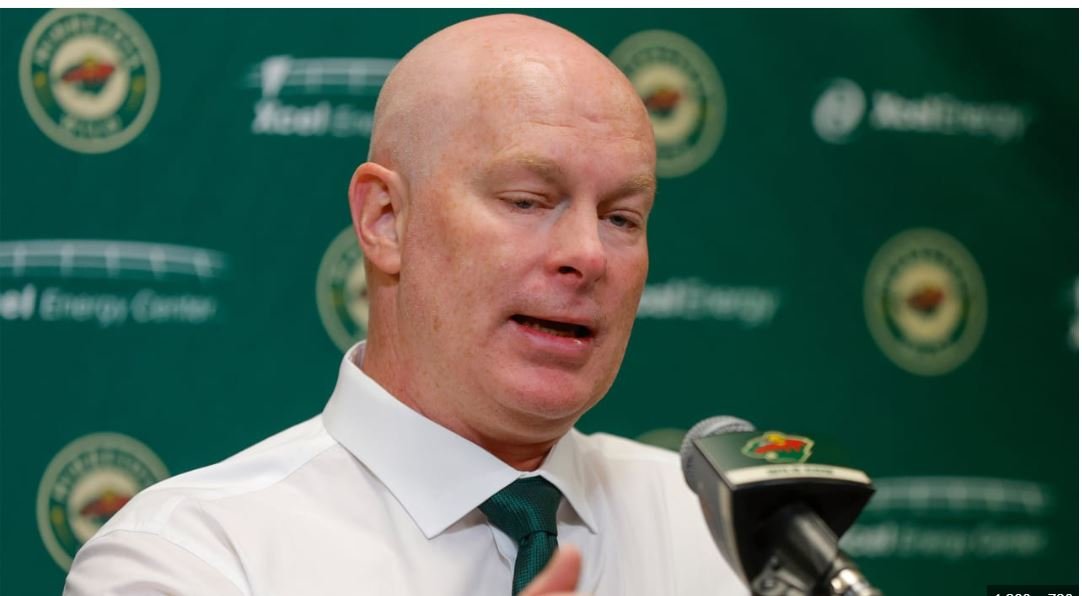
John Hynes, the head coach of the Minnesota Wild, faced a significant challenge as he announced the extended absence of a star player due to injury. This revelation has not only reshaped the team’s immediate lineup and strategic planning but has also prompted discussions within the hockey community about the implications for the Wild’s season and the player’s road to recovery.
The Star Player and His Importance to the Team
The star player in question holds a pivotal role within the Minnesota Wild roster, contributing significantly to the team’s success through his exceptional skills, leadership on the ice, and influence in the locker room. His absence due to injury represents a substantial loss for the Wild, affecting both the team’s performance on the ice and its overall morale and cohesion.
Nature of the Injury and Diagnosis
The nature and severity of the player’s injury play a crucial role in understanding the impact on the Minnesota Wild:
1. Injury Details: The specific details of the injury, whether it’s related to a particular body part such as knee, shoulder, or head, determine the timeline for recovery and rehabilitation. Understanding the injury’s nature helps in managing expectations for the player’s return to play.
2. Medical Assessment: The player’s injury undergoes thorough medical assessment and diagnosis by team doctors and specialists. This assessment includes imaging tests, physical examinations, and consultations to determine the best course of treatment and rehabilitation.
3. Recovery Timeline: Based on the diagnosis, the coaching staff and medical team establish a recovery timeline. This timeline outlines milestones for the player’s rehabilitation progress and targets for returning to practice and game readiness.
Coach John Hynes’ Announcement
Head Coach John Hynes plays a pivotal role in managing the team’s dynamics and addressing challenges such as player injuries:
1. Communication with Players: Hynes communicates directly with the injured player to provide support, guidance, and reassurance throughout the recovery process. Maintaining open lines of communication helps in fostering trust and maintaining the player’s morale.
2. Team Morale and Focus: Hynes addresses the impact of the player’s absence on team morale and focuses on rallying the team around collective goals and responsibilities. This involves emphasizing resilience, adaptability, and unity in the face of adversity.
3. Strategic Adjustments: With the star player sidelined, Hynes adjusts team strategies, line combinations, and special teams units to optimize performance and fill the void left by the player’s absence. This involves deploying alternative players in key roles and reshaping game plans accordingly.
Impact on Team Performance and Dynamics
The absence of a star player due to injury has multifaceted effects on the Minnesota Wild:
1. On-Ice Performance: The player’s absence alters the team’s on-ice dynamics, affecting offensive and defensive strategies, power play effectiveness, penalty killing units, and overall team performance metrics such as scoring, goals against, and possession statistics.
2. Leadership Void: The star player’s absence creates a leadership void within the locker room, impacting team cohesion, communication, and the distribution of leadership responsibilities among teammates.
3. Opportunity for Others: The injury presents an opportunity for other players to step up and assume greater roles within the team. This includes younger players seeking to prove themselves, veterans taking on increased responsibilities, and depth players filling critical lineup spots.
Fan and Media Reaction
The announcement of the star player’s extended absence due to injury triggers reactions from fans, media, and the broader hockey community:
1. Fan Support: Minnesota Wild fans express support for the injured player, sending messages of encouragement, well-wishes, and hopes for a speedy recovery. The fan base rallies behind the team, demonstrating resilience and optimism in the face of adversity.
2. Media Analysis: Sports analysts and media outlets analyze the impact of the injury on the Wild’s season prospects, playoff chances, and strategic planning. They provide insights into roster adjustments, coaching decisions, and player acquisitions to mitigate the effects of the injury.
3. Community Engagement: The Minnesota Wild organization engages with the community through outreach initiatives, fan interactions, and public relations efforts aimed at maintaining transparency, communication, and support during the player’s recovery process.
Road to Recovery and Return to Play
For the injured star player, the road to recovery involves a structured rehabilitation program, guided by team medical staff and specialists:
1. Rehabilitation Protocols: The player undergoes specific rehabilitation protocols designed to restore physical function, strength, flexibility, and range of motion in the injured area. This includes physical therapy sessions, strength training, cardiovascular conditioning, and on-ice drills as tolerated.
2. Milestones and Progress Monitoring: The player progresses through rehabilitation milestones, monitored closely by medical professionals and coaching staff. Regular assessments track progress, adjust treatment plans, and prepare the player for gradual return to practice and game participation.
3. Return to Play Decision: The decision for the player to return to play is based on medical clearance, physical readiness, and confidence in the injury’s stability and durability under game conditions. Team doctors, coaching staff, and the player collaborate to ensure a safe and successful return to competitive hockey.
John Hynes’ announcement of a star player’s extended absence due to injury represents a significant challenge for the Minnesota Wild. It underscores the inherent risks and uncertainties in professional sports, where injuries can impact team dynamics, performance, and strategic planning. As the Wild navigate through this period, they rely on resilience, adaptability, and collective effort to maintain competitiveness and pursue their goals in the highly competitive landscape of professional hockey.
The player’s journey through rehabilitation and eventual return to play symbolizes perseverance, dedication, and the unwavering pursuit of excellence in overcoming adversity. For John Hynes and the Minnesota Wild, managing the star player’s absence involves strategic adjustments, leadership guidance, and community support to navigate through challenges and emerge stronger as a team.

Leave a Reply